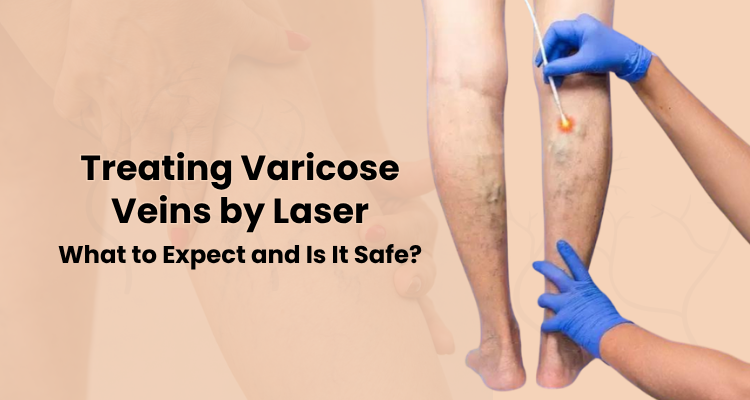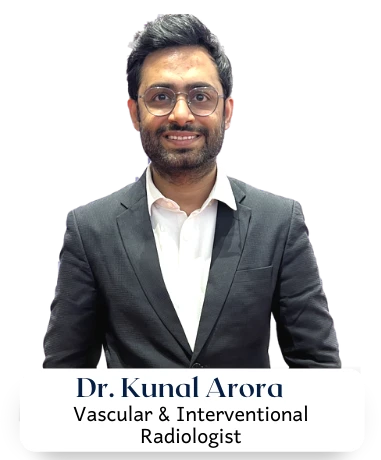Varicose vein and vein reflux disease surgery is complicated and painful. Recent advancements in the healthcare industry now provide safer and more effective surgeries. Treatment of varicose veins by laser using Endovenous Laser Ablation is now a popular method of treatment among patients. EVLA is done under local anaesthesia and laser, hence making the process faster and painless.
Each situation is different, but most individuals can safely have EVLA done to address the pain and enhance the health of the veins. If you intend to eliminate varicose veins, read this varicose vein guide so you will be aware of what is involved and have faith in your decision.
About Endovenous Laser Ablation
Endovenous Laser Ablation is a highly rated treatment for varicose veins and is officially approved by NICE. Instead of having veins cut out surgically, EVLA closes the faulty veins shut using targeted laser light. This closes the faulty veins and preserves the healthy vein, maintaining blood flow and circulation, thereby relieving the pressure off the legs. As a result, your legs will look better while also letting you manage further varicose veins complications and preventions.
The process is quick and easy, taking place under local anaesthetic as an in-and-out or OPD treatment. The treatment sessions take from one to two hours, depending on the number of veins treated. Most are able to walk soon afterwards, and many resume normal activities the same day. Varicose vein ablation with laser is a safe, efficacious, and convenient treatment option for varicose veins.
Step-By-Step EVLA Procedure:
- Preparation: Draping and Sterilising
The EVLA treatment starts by preparing the treatment site using Betadine, an antiseptic agent. Sterilisation of the skin greatly reduces the infection risk. The site is cleaned and draped and goes from the groin to the ankle, leaving a sterile area for the procedure. - Ultrasound Guidance
Ultrasound is a major component of EVLA. It allows for real-time imaging, and the doctor can visualise the varicose vein and adjacent tissues in detail. This direct visualisation is helpful in correctly placing needles and instruments. This is really important to improve the treatment’s accuracy and safety. - Inserting the Needle and Wire/Sheath
The doctor inserts a needle into the vein to be treated under an ultrasound, either below the knee or above the ankle. A guidewire is then passed through it, into the vein, after the correct position of the needle is confirmed. The guidewire is a guide for a sheath, which is a slender and flexible tube that allows the introduction of the laser fibre into the vein without any issue. - Insertion of the Laser Fibre
Next, the laser fibre is inserted into the sheath. The laser fibre is a thin, flexible tube that transmits the heat energy to the walls of the vein and helps treat the vein. The ultrasound device continuously monitors the process to confirm the laser fibre’s accurate positioning inside the vein. - Applying Tumescent Anaesthetic
A local anesthetic is given around the vein to ensure the patient feels comfortable. The anaesthetic is given through a needle beginning at the ankle and working up to the groin. This numbs the area where the treatment is carried out. The anaesthetic solution also compresses the vein around the laser fibre, making the treatment more effective.
- Operating the Laser Machine
The laser machine is activated after the laser fibre position is confirmed on ultrasound and the tumescent anaesthesia has been given. The confirmation helps ensure that the treatment is done in the right location.
- Supplying Heat Energy
The laser device releases controlled heat onto the walls of the veins. The heat collapses and closes off the walls of the varicose vein. The process starts close to the groin and works its way down the length of the vein, closing off the damaged vein.
- Withdrawing the Laser Fibre
As it delivers heat, the laser fibre is gradually pulled back. This gentle extraction treats the vein completely from groin to ankle. During this process, ultrasound continues to track the procedure, assuring accuracy and optimal results.
This precise method makes safe and effective varicose vein treatment possible with minimal pain and rapid recovery. So, don’t delay. Seek advanced varicose veins diagnosis and treatment today!
Recovery Following EVLA:
Recovering from Endovenous Laser Ablation (EVLA) depends on the number of veins treated, overall health, and compliance with aftercare instructions. Most people are back to light activities within a day or two and can expect complete recovery in two to four weeks.
EVLA closes damaged veins, redirecting blood flow through healthier vessels. The treated vein hardens and is reabsorbed into the body over a period of weeks to months. Laser varicose vein treatment side effects tend to be minor, and they typically fade soon.
Immediate Aftercare After EVLA:
The treated leg is wrapped with a compression bandage after the procedure. Compression stockings are applied to aid blood flow and prevent swelling. Bandages must remain in place for a minimum of 48 hours. Bruising is common, but any bleeding must be reported to the doctor.
For the first few days, rest with the leg elevated and do not sit or stand for extended periods. Compression socks need to be worn continuously for a minimum of three days, followed by daytime use for as long as two weeks.
Immediate walking is generally encouraged for most patients after treatment as it improves circulation and lowers the risk of deep vein thrombosis (DVT). Patients with early stage varicose vein symptoms and even beyond can resume their routine work the very next day after the procedure. Following these aftercare measures answers the question of how do I get rid of spider veins while promoting a smooth recovery and supporting long-term results.
Is EVLA Safe?
The biggest advantage of EVLA is its safety. Most patients who seek varicose veins treatment in Mumbai opt for EVLA for its convenience. The procedure has low risks, and most side effects, such as pain, bruising, or thrombosis, can be almost entirely eliminated if patients are careful to comply with their doctor’s advice. Whenever possible, don’t stand still for a long time, and don’t sit with your legs loose. Following the initial rest, gentle, non-straining exercises are advisable, and raising your legs when sitting aids in even blood flow, which continues to guarantee safe recovery.
Conclusion
And here you go! These are the aspects you need to know about the treatment of varicose veins by laser. Dr. Kunal Arora, a Vascular and Interventional Radiologist in Mumbai, brings over nine years of expertise, including six years focused on advanced subspecialty care.
His emphasis on minimally invasive methods prevents patients from undergoing conventional surgery while treating existing varicose veins, DVT, and other vascular disorders effectively. Patients looking for professional treatment can trust Dr. Kunal Arora and the Endovascular Care Centre for safe and efficient vein care treatments.
FAQs
1. Is laser treatment of varicose veins safe?
EVLA is safe, with only a few side effects. Possible aftereffects involve short-lived bruising or mild soreness after the procedure.
2. How effective is laser treatment for varicose veins?
EVLA achieves a success rate between 95% and 98%. This offers fewer risks than traditional surgery and reduces the need for conventional vein operations.
3. How many treatment sessions are needed to eliminate a laser vein?
The majority of patients require only one session. However, rarely additional procedures might be required.
4. How bad is varicose vein laser therapy in terms of pain?
EVLA is usually painless or at least has minimal discomfort when done by a skilled vein specialist.


